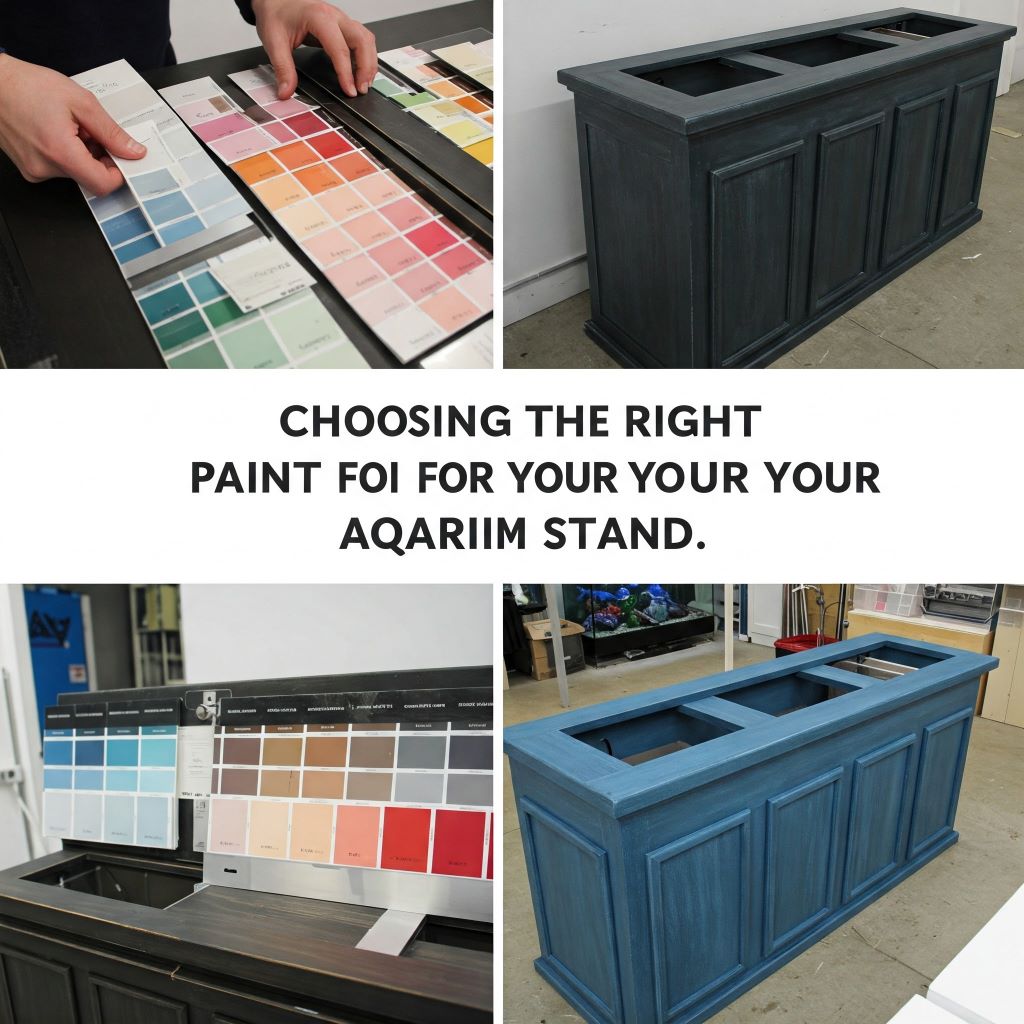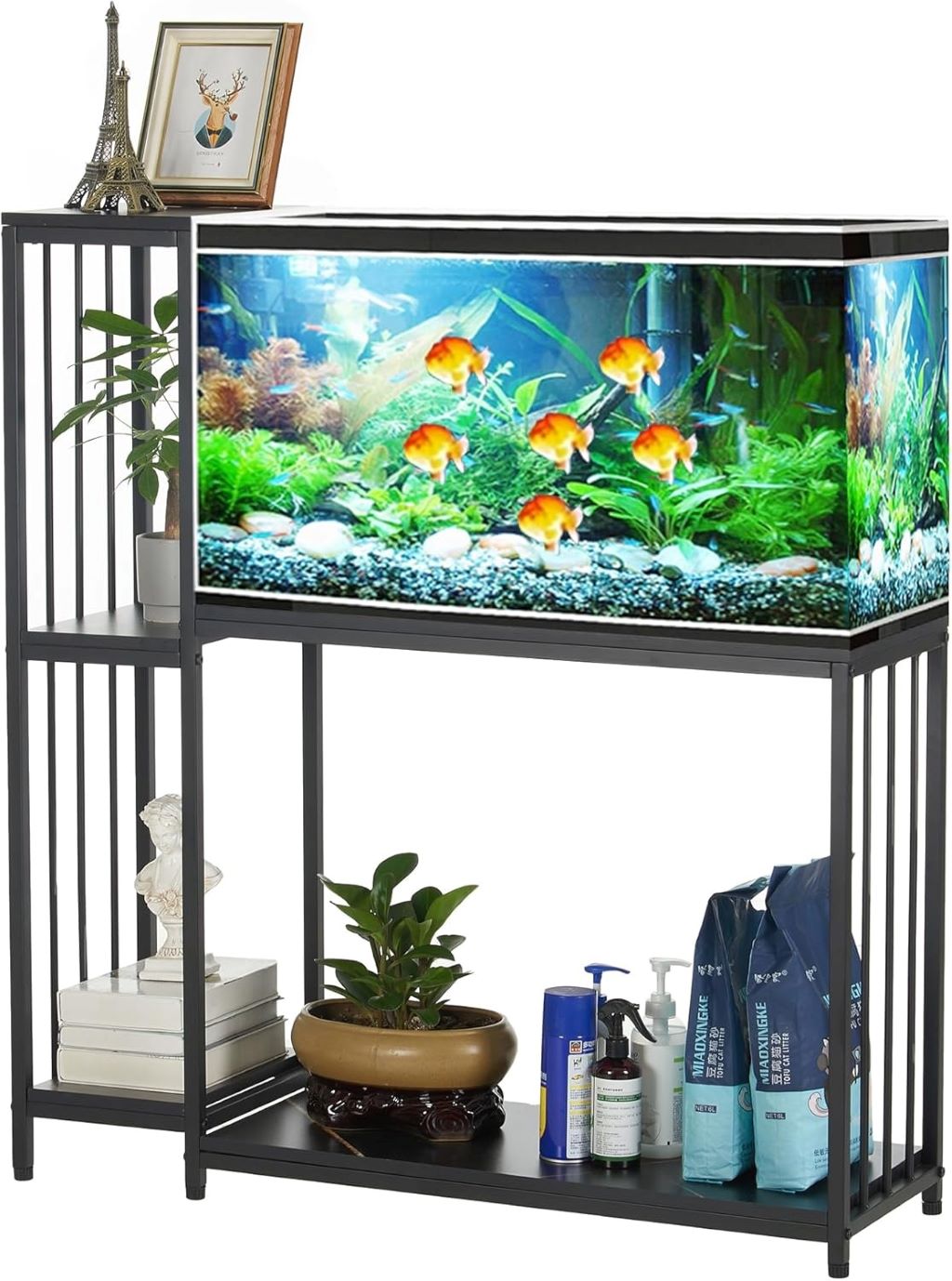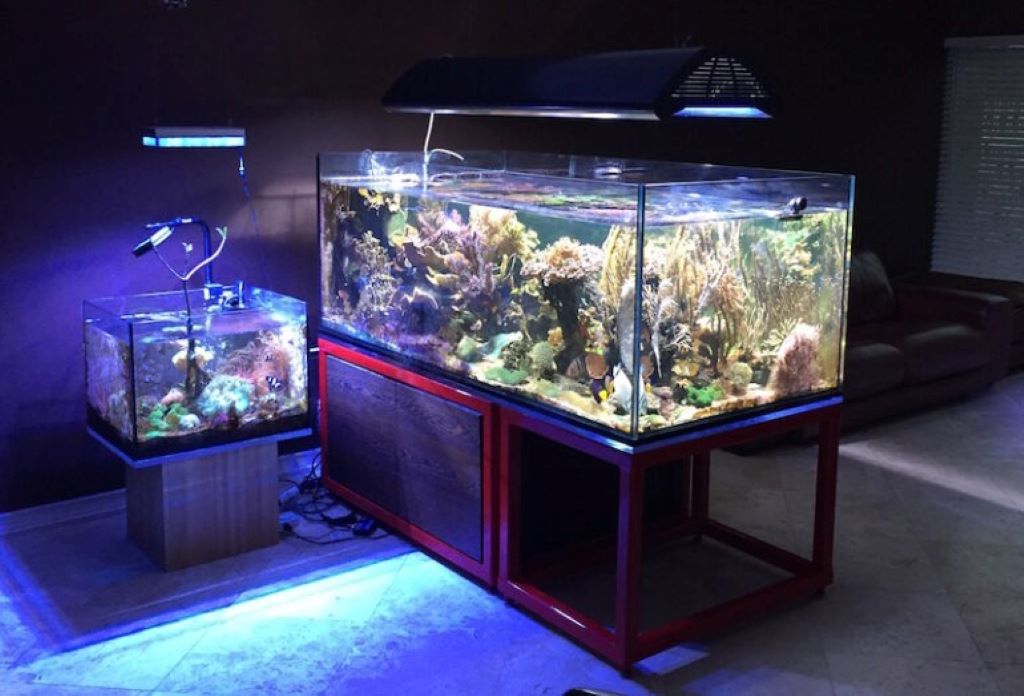An aquarium stand is more than just a platform for your aquatic haven; it’s a crucial piece of furniture that ties the whole room together. But with the constant presence of moisture and humidity from your aquarium, choosing the right paint for your stand is essential to ensure its longevity and aesthetic appeal. This comprehensive guide will delve into the world of aquarium stand paint that resists humidity, exploring the types of paint designed specifically for these conditions, providing reviews of popular brands, and answering frequently asked questions to help you make an informed decision.
Understanding the Challenge of Humidity
Before we dive into the specifics of paint, it’s crucial to understand why humidity poses a challenge for aquarium stands. The constant evaporation of water from your aquarium creates a humid environment around the stand. This moisture can wreak havoc on traditional paints, causing them to peel, crack, and bubble. Moreover, the presence of saltwater in marine aquariums can further exacerbate the issue, leading to corrosion and rust on metal stands.
Types of Paint That Resist Humidity
Fortunately, several types of paint are specifically designed to withstand the challenges of high-humidity environments. These paints are formulated to create a durable, moisture-resistant barrier that protects your aquarium stand from the damaging effects of water and salt. Here are some popular options:
- Epoxy Paint: Epoxy paint is a two-part system consisting of resin and a hardener. When mixed, these components create a chemical reaction that results in a tough, durable, and highly resistant coating. Epoxy paints are known for their excellent adhesion, water resistance, and ability to withstand harsh chemicals, making them an ideal choice for aquarium stands.
- Polyurethane Paint: Polyurethane paint is another popular choice for high-humidity environments. It forms a hard, protective layer that is resistant to moisture, abrasion, and chemicals. Polyurethane paints are available in both oil-based and water-based formulas, offering flexibility for different applications.
- Marine Paint: As the name suggests, marine paints are specifically designed for use in marine environments, where they are exposed to constant moisture and saltwater. These paints are highly resistant to corrosion, making them an excellent choice for metal aquarium stands. Marine paints are also available in various colors and finishes, allowing you to match your stand to your aquarium’s aesthetic.
- Acrylic Latex Paint with Additives: While standard acrylic latex paint may not be the best choice for high-humidity environments, adding a mildewcide or moisture-resistant additive can significantly improve its performance. These additives help prevent the growth of mold and mildew, which can thrive in humid conditions.
Reviewing Popular Brands
Now that you understand the different types of paint suitable for aquarium stands, let’s explore some popular brands and their offerings:
- Rust-Oleum Marine Coatings: Rust-Oleum is a well-known brand in the paint industry, and its marine coatings line is specifically designed for high-moisture environments. Their Marine Topside Paint is a popular choice for aquarium stands, offering excellent durability, water resistance, and UV protection. It’s available in various colors and finishes, including gloss, semi-gloss, and flat.
- TotalBoat Marine Paint: TotalBoat is another reputable brand offering a range of marine paints suitable for aquarium stands. Their TotalBoat AlumiPaint AF is an excellent choice for aluminum stands, providing superior adhesion and corrosion protection. It’s also available in various colors, making it easy to match your stand to your aquarium’s aesthetic.
- System Three Epoxy Resin: System Three is a leading manufacturer of epoxy resins, and their products are known for their high quality and performance. Their System Three Clear Epoxy Resin is a popular choice for aquarium stands, offering excellent water resistance, durability, and clarity. It can be used as a topcoat over other paints or as a standalone finish.
- Benjamin Moore Aura Bath & Spa: While not specifically designed for marine environments, Benjamin Moore’s Aura Bath & Spa paint is a premium option that offers excellent moisture resistance and mildew protection. It’s formulated with a proprietary technology that creates a durable, breathable film that resists moisture penetration.
Choosing the Right Paint for Your Aquarium Stand

With so many options available, choosing the right paint for your aquarium stand can seem overwhelming. Here are some factors to consider:
- Material of your stand: The material of your stand will influence your paint choice. For wooden stands, epoxy or polyurethane paints are excellent options. For metal stands, marine paints or epoxy paints with corrosion inhibitors are recommended.
- Desired finish: Consider the aesthetic you want to achieve. Do you prefer a glossy, semi-gloss, or flat finish? Each type of paint offers different levels of sheen, so choose one that complements your aquarium and overall décor.
- Ease of application: Some paints are easier to apply than others. If you’re a DIY enthusiast, consider a paint that is user-friendly and doesn’t require specialized equipment.
- Environmental considerations: If you’re concerned about VOCs (volatile organic compounds), look for low-VOC or VOC-free paints. These paints are better for the environment and your health.
Preparing Your Aquarium Stand for Painting
Proper preparation is crucial for achieving a durable and long-lasting paint job. Here’s a step-by-step guide:
- Clean the stand: Remove any dust, dirt, or debris from the stand using a damp cloth. For metal stands, use a wire brush to remove any loose rust or paint.
- Sanding the stand: Sanding the stand creates a rough surface for the paint to adhere to. Use medium-grit sandpaper for initial sanding and fine-grit sandpaper for smoothing the surface.
- Prime the stand: Applying a primer helps improve paint adhesion and durability. Choose a primer that is compatible with your chosen paint.
- Mask off any areas you don’t want to paint: Use painter’s tape to protect any hardware or areas you don’t want to paint.
Painting Your Aquarium Stand
Once your stand is prepared, you can start painting. Follow these steps for a smooth and even finish:
- Stir the paint thoroughly: Ensure the paint is well-mixed before applying it.
- Apply thin coats: Avoid applying thick coats, as they can take longer to dry and may result in drips or runs.
- Allow each coat to dry completely: Follow the manufacturer’s instructions for drying times.
- Sand between coats: Lightly sand between coats with fine-grit sandpaper to create a smooth surface for the next coat.
- Apply a topcoat (optional): A topcoat can provide additional protection and enhance the finish of your paint job.
Finding the Sweet Spot: The Perfect Height for Your Reef Tank Stand
Popular FAQs
-
Can I use regular wall paint on my aquarium stand?
While you can technically use regular wall paint, it’s not recommended. Wall paints are not designed to withstand the high humidity and potential saltwater exposure associated with aquariums. They are more prone to peeling, cracking, and mildew growth.
-
How long will the paint last on my aquarium stand?
The lifespan of your paint job depends on several factors, including the type of paint used, the quality of the preparation, and the level of humidity exposure. With proper care and maintenance, a high-quality paint job can last for several years.
-
How do I clean my painted aquarium stand?
You can clean your painted aquarium stand with a damp cloth and mild detergent. Avoid using abrasive cleaners or scrubbers, as they can damage the paint.
-
Can I paint a metal aquarium stand?
Yes, you can paint a metal aquarium stand. However, it’s essential to choose a paint that is specifically designed for metal surfaces and offers corrosion protection. Marine paints or epoxy paints with corrosion inhibitors are excellent choices.
-
How do I prevent condensation on my aquarium stand?
Condensation can occur when there’s a significant temperature difference between the aquarium water and the surrounding air. To prevent condensation, ensure your aquarium has a tight-fitting lid and maintain a consistent room temperature. You can also use a dehumidifier to reduce moisture levels in the air.
Conclusion
Choosing the right paint for your aquarium stand is crucial for protecting it from the damaging effects of humidity and ensuring its longevity. By understanding the different types of paint available, considering the specific needs of your stand, and following proper preparation and application techniques, you can achieve a durable and aesthetically pleasing finish that will enhance the beauty of your aquatic haven for years to come. Remember to prioritize paints that offer excellent moisture resistance, adhesion, and durability, and don’t hesitate to seek professional advice if you’re unsure about the best option for your specific needs. With careful consideration and a little effort, you can create a stunning aquarium stand that complements your aquatic masterpiece and adds a touch of elegance to your home décor.
Related Topics:
The ideal Reef Aquarium temperature




